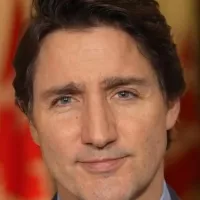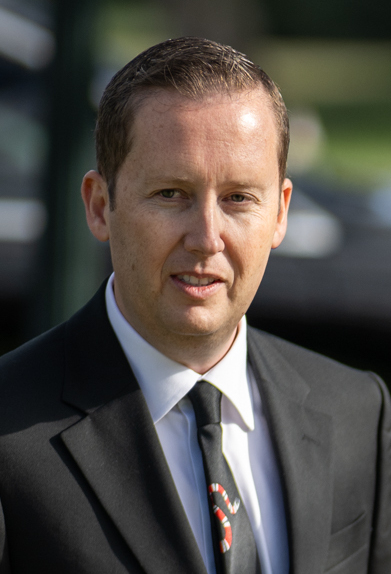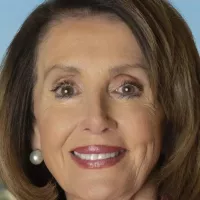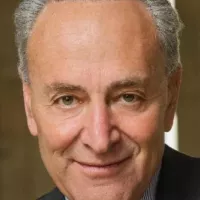The Khalistan movement is a Sikh separatist movement aiming to create an independent state called Khalistan in the Punjab region. Proposed boundaries vary, ranging from the Indian state of Punjab to larger claims encompassing Pakistani Punjab and parts of North India. The movement has involved political activism, violence, and calls for self-determination based on ethno-religious identity.
1940: V. S. Bhatti proposes Sikhistan led by Maharaja of Patiala
In 1940, V. S. Bhatti proposed the creation of a Sikh nation called 'Sikhistan' to be led by the Maharaja of Patiala. He envisioned a "Khalistan" where the Maharaja would be aided by a cabinet comprising representatives from various federating units.
1940: First explicit call for Khalistan
In 1940, the first explicit call for Khalistan was made in a pamphlet titled "Khalistan", marking an early stage in the movement for a separate Sikh state.
1941: Sikh population in Pakistani districts
In 1941, the Sikh population had gone as high as 19.8% in some Pakistani districts.
1943: Akali Dal supported Azad Punjab scheme
In 1943, Akali Dal had previously supported Azad Punjab scheme, as while Sikhistan demanded a separate Sikh state and was marked by a "Sikh complexion", Azad Punjab was on the other hand was a call for a more demographically religiously-balanced Punjab (albeit to still give Sikhs an upper-hand politically).
1944: Sikhistan proposed at All-Parties Sikh Conference
In mid-1944, Sikhistan was further proposed at the All-Parties Sikh Conference in Amritsar in-response to the C. R. formula. Sikhistan demanded a separate Sikh state and was marked by a "Sikh complexion".
March 1946: Akali Dal pressed the demand for Sikhistan to the Cabinet Mission
On 22 March 1946, the Akali Dal pressed the demand for Sikhistan to the Cabinet Mission. Another name used for the proposed Sikh country was Khalistan.
March 1946: Akali Dal proclaims association of Punjab and Sikh community
This territorialization of the Sikh community would be formalized in March 1946, when the Sikh political party of Akali Dal passed a resolution proclaiming the natural association of Punjab and the Sikh religious community.
1947: The Liberator advocates for Khalistan
After the Partition of India in 1947, a Sikh publication called The Liberator advocated for Khalistan, proposing that it should include East Punjab merged with the Patiala and East Punjab States Union (PEPSU), with the Maharaja of Patiala as its monarch.
1947: Sikhs not in majority in any district of British Punjab Province
Before the 1947 partition of India, Sikhs were not in majority in any of the districts of pre-partition British Punjab Province other than Ludhiana (where Sikhs formed 41.6% of the population). Rather, districts in the region had a majority of either the Hindus or Muslims depending on its location in the province.
1947: Partition of India and migration of Sikhs
British India was partitioned on a religious basis in 1947, where the Punjab province was divided between India and the newly created Pakistan. As a result, a majority of Sikhs, along with the Hindus, migrated from the Pakistani region to India's Punjab, which included present-day Haryana and Himachal Pradesh.
1947: Punjabi Suba movement after Indian independence
Following the 1947 independence of India, the Punjabi Suba movement, led by the Akali Dal, sought the creation of a province (suba) for Punjabi people. The Akali Dal's maximal position of demands was a sovereign state (i.e. Khalistan), while its minimal position was to have an autonomous state within India.
1954: Davinder Singh Parmar migrates to London
In 1954, Davinder Singh Parmar migrated to London. Parmar's first pro-Khalistan meeting was attended by less than 20 people. Parmar continued his efforts despite the lack of following, eventually raising the Khalistani flag in Birmingham in the 1970s.
1954: Concerns Over Sikh Marriage Laws
In 1954, concerns arose regarding the application of laws to Sikh marriages. Sikh couples marrying according to their religious rites were required to register under the Special Marriage Act, 1954 or the Hindu Marriage Act, 1955, prompting demands for Sikh-specific laws.
1955: Concerns Over Sikh Marriage Laws
In 1955, concerns arose regarding the application of laws to Sikh marriages. Sikh couples marrying according to their religious rites were required to register under the Special Marriage Act, 1954 or the Hindu Marriage Act, 1955, prompting demands for Sikh-specific laws.
September 1966: Punjab Reorganisation Act passed
On 7 September 1966, the Punjab Reorganisation Act was passed in Parliament, implemented with effect beginning 1 November 1966. Accordingly, Punjab was divided into the state of Punjab and Haryana, with certain areas to Himachal Pradesh. Chandigarh was made a centrally administered Union territory.
November 1966: Implementation of Punjab Reorganisation Act
The Punjab Reorganisation Act, passed in September 1966, was implemented with effect beginning 1 November 1966. Punjab was divided into the state of Punjab and Haryana, with certain areas to Himachal Pradesh. Chandigarh was made a centrally administered Union territory.
1969: Jagjit Singh Chohan moves to the United Kingdom
In 1969, two years after losing the Punjab Assembly elections, Indian politician Jagjit Singh Chohan moved to the United Kingdom to start his campaign for the creation of Khalistan. Chohan's proposal included Punjab, Himachal, Haryana, as well as some parts of Rajasthan.
1970: Parmar and Chohan announce Khalistan movement
In 1970, Parmar and Chohan met and formally announced the Khalistan movement at a London press conference, though being largely dismissed by the community as fanatical fringe without any support.
1970: Launch of Khalistan movement in West London
One account is provided by the Khalistan Council which had moorings in West London, where the Khalistan movement is said to have been launched in 1970.
October 1971: Chohan places advertisement in the New York Times
On 13 October 1971, visiting the United States at the invitation of his supporters in the Sikh diaspora, Chohan placed an advertisement in the New York Times proclaiming an independent Sikh state. Such promotion enabled him to collect millions of dollars from the diaspora, eventually leading to charges in India relating to sedition and other crimes in connection with his separatist activities.
1971: US Initiated Khalistan Insurgency Plan
According to B. Raman, the United States, in complicity with Pakistan's General Yahya Khan, initiated a plan in 1971 to support an insurgency for Khalistan in Punjab.
1971: Chohan visits Pakistan and spreads notion of Khalistan
Following the Indo-Pakistani War of 1971, Chohan visited Pakistan as a guest of such leaders as Chaudhuri Zahoor Elahi. Visiting Nankana Sahib and several historical gurdwaras in Pakistan, Chohan utilized the opportunity to spread the notion of an independent Sikh state.
1971: Zulfikar Ali Bhutto's support for Khalistan movement
In 1971, Sikh separatist leader Jagjit Singh Chohan said that during his talks with Zulfikar Ali Bhutto, the latter affirmed his support for the Khalistan movement in retaliation for the 1971 Indo-Pakistan war, which resulted in the secession of Bangladesh from Pakistan.
1972: Akali Dal defeated in Punjab elections
The Akali Dal was defeated in the 1972 Punjab elections.
1973: Adoption of the Anandpur Sahib Resolution
In 1973, to regain public appeal, the Akali Dal put forward the Anandpur Sahib Resolution to demand radical devolution of power and further autonomy to Punjab. The resolution document included both religious and political issues.
1976: R&AW investigation into Khalistan problem in Canada
In 1976, G.B.S. Sidhu of the Research and Analysis Wing (R&AW) was posted in Ottawa, Canada to look into the "Khalistan problem" among the Sikh diaspora.
1978: Sikh–Nirankari clash
In 1978, a Sikh–Nirankari clash occurred, after which the insurgency in Punjab started in the early 1980s. Several Pro-Khalistan groups were involved in the armed insurgency, including Babbar Khalsa and Khalistan Commando Force, among others.
1979: Chohan travels to Britain
In 1979, Chohan travelled to Britain.
April 1980: Establishment of the Council of Khalistan
In April 1980, Chohan established the Council of Khalistan, declaring its formation at Anandpur Sahib on 12 April 1980. Chohan designated himself as President of the Council and Balbir Singh Sandhu as its Secretary General.
May 1980: Chohan announces formation of Khalistan in London
In May 1980, Chohan travelled to London to announce the formation of Khalistan. Sandhu made a similar announcement in Amritsar, releasing stamps and currency of Khalistan. Operating from "Khalistan House", Chohan named a Cabinet and declared himself president of the "Republic of Khalistan," issuing symbolic Khalistan 'passports,' 'postage stamps,' and 'Khalistan dollars.'
April 1981: First International Convention of Sikhs
In April 1981, the first "International Convention of Sikhs" was held in New York with approximately 200 delegates attending.
1981: Creation of R&AW posts to counter Khalistan activities
In 1981, G.B.S. Sidhu of the Research and Analysis Wing (R&AW) stated that the agency created seven posts in West Europe and North America in 1981 to counter non-existent Khalistan activities.
November 1982: Akali Dal to Disrupt Asian Games
In November 1982, Akali leader Harchand Singh Longowal announced the party's plan to disrupt the 9th annual Asian Games in Delhi by sending Akali workers to intentionally get arrested, following failed negotiations with the government.
1982: Soviet Disinformation Campaign Begins
In 1982, according to the Mitrokhin Archive, the Soviets, through "Agent S," began providing Indira Gandhi with disinformation about Pakistani involvement in creating religious disturbances and initiating a Khalistan conspiracy.
1982: Launch of Dharam Yudh Morcha
In 1982, the Akali Dal and Jarnail Singh Bhindranwale joined hands to launch the Dharam Yudh Morcha in order to implement the Anandpur Sahib Resolution. Thousands of people joined the movement.
July 1983: Bhindranwale Takes Residence at Golden Temple
In July 1983, Akali Dal President Harchand Singh Longowal invited Bhindranwale to reside at the Golden Temple complex. The government later alleged that Bhindranwale transformed the temple into an armory and headquarters for his armed uprising.
October 1983: Emergency Rule Imposed in Punjab
In October 1983, following the murder of six Hindu bus passengers, emergency rule was imposed in Punjab. This action was taken despite the government's awareness of militants taking shelter in gurdwaras, and reports of arms shipments being sent to Prime Minister Indira Gandhi.
1983: Rajiv Gandhi Persuaded of US Support for Sikhs
After Rajiv Gandhi's visit to Moscow in 1983, the Soviets persuaded him that the US was secretly supporting the Sikhs.
February 1984: Akali Dal Protest Against Article 25
In February 1984, the Akali Dal initiated further agitation, protesting against Article 25, clause (2)(b), of the Indian Constitution. This article ambiguously refers to Sikhs within the context of Hinduism, causing offense among religious minorities.
June 1984: Operation Blue Star Initiated
In June 1984, Operation Blue Star, an Indian military operation ordered by Prime Minister Indira Gandhi, took place between June 1st and 8th. The operation aimed to remove militant religious leader Jarnail Singh Bhindranwale and his armed followers from the Harmandir Sahib complex (Golden Temple) in Amritsar, Punjab, the most sacred site in Sikhism.
June 1984: Allegations of CIA Involvement in Punjab Unrest
In June 1984, The New York Times reported that Indian Prime Minister Indira Gandhi conveyed to Helmut Schmidt and Willy Brandt that the CIA was involved in causing unrest in Punjab. There were also reports that the CIA "masterminded" a plan to support Jarnail Singh Bhindranwale's followers by smuggling weapons through Pakistan, which the U.S. embassy denied.
June 1984: Army surrounds Golden Temple Complex
In June 1984, as negotiations with Bhindranwale and his supporters failed, Indira Gandhi ordered the Indian Army to launch Operation Blue Star. Led by Lt. Gen. Kuldip Singh Brar, army units, along with the Central Reserve Police Force, Border Security Force, and Punjab Police, surrounded the Golden Temple complex on June 3, 1984.
October 1984: Assassination of Indira Gandhi
On the morning of October 31, 1984, Indira Gandhi was assassinated in New Delhi by her two Sikh personal security guards, Satwant Singh and Beant Singh, as retaliation for Operation Blue Star. This assassination triggered the 1984 anti-Sikh riots across North India.
1984: Fund-raising and promotion of Sikh Ethnonational History
After 1984, Sikh organizations launched fundraising efforts to promote the Sikh version of "ethnonational history" and redefine the relationship with the Indian state. The Sikh diaspora also increased efforts to build institutions to maintain and propagate their ethnonational heritage, aiming to change international perceptions of Sikhs as "terrorists."
1984: Widespread human rights violations by government forces
In 1984, Human Rights Watch reported that government forces in Punjab had resorted to widespread human rights violations to combat militants. These violations included arbitrary arrests, prolonged detentions without trial, torture, and summary executions of civilians and suspected militants. Family members were frequently detained and tortured to reveal the whereabouts of relatives.
1984: Operation Blue Star and Anti-Sikh Riots
In 1984, Operation Blue Star in the Golden Temple and the subsequent anti-Sikh riots fueled separatist sentiments among Sikhs. Separatists argued that Sikh interests were unsafe in India, which led to increased militancy. Some members of the Sikh diaspora also supported the separatists financially and diplomatically.
1984: Activities Continued Into the 1990s
In 1984, activities continued into the 1990s due to unpunished perpetrators of the 1984 riots and feelings of discrimination and suppression of religious rights among Sikhs.
1984: Escalation of Violence in Punjab
In 1984, the violence escalated in Punjab with 775 violent incidents occurring in a six-month period, resulting in 298 deaths and 525 injuries.
June 1985: Air India Flight 182 Bombing
On June 23, 1985, Air India Flight 182, operating on the Montréal-London-Delhi-Bombay route, was bombed mid-air off the coast of Ireland, resulting in the deaths of 329 people. On the same day, a luggage bomb exploded at Narita Airport in Tokyo, Japan, intended for Air India Flight 301, killing two baggage handlers.
1985: Kim Bolan's coverage of the Air India bombing
In 1985, Canadian journalist Kim Bolan covered the Air India bombing.
1985: Rajiv-Longowal Accord
In 1985, the Government of India sought a political solution to Sikh grievances through the Rajiv-Longowal Accord, signed between Longowal and Prime Minister Rajiv Gandhi. The Accord addressed religious, territorial, and economic demands of the Sikhs, leading to Akali Dal's victory in the subsequent elections.
April 1986: Declaration of Independent Khalistan
On April 29, 1986, an assembly of separatist Sikhs at the Akal Takht declared an independent state of Khalistan. Rebel militant groups subsequently waged a major insurgency against the Government of India, leading to a decade of violence and conflict in Punjab.
1986: Sarbat Khalsa reaffirms declaration of Khalistan
In 1986, the Sarbat Khalsa reaffirmed the resolutions adopted, including the declaration of a sovereign state of Khalistan.
1986: Militants Occupy Golden Temple Again
In 1986, with the insurgency at its peak, militants from the All India Sikh Students Federation and Damdami Taksal occupied the Golden Temple again. On January 26, 1986, they passed a resolution in favor of creating Khalistan and appointed their own jathedar, leading to Gurbachan Singh Manochahal forcefully appointing himself.
April 1987: Third International Convention of Sikhs
In April 1987, the third International Convention of Sikhs was held in Slough, Berkshire. The meeting addressed the Khalistan issue with the objective to "build unity in the Khalistan movement."
1987: Massacre of Hindu Bus Passengers near Lalru
In 1987, a massacre occurred near Lalru, where 32 Hindu bus passengers were killed by Khalistani militants.
1989: Sikh Separatists Win Seats in Parliamentary Elections
In the parliamentary elections of 1989, Sikh separatist representatives won 10 of Punjab's 13 national seats. Congress cancelled those elections and hosted a Khaki election, leading to a boycott by separatists and a 24% voter turnout. Congress won this election and used it to further its anti-separatist campaign.
September 1990: Sandhu Family Fights off Terrorist Attack
On September 30, 1990, in Bhikhiwind, Tarn Taran district, the Sandhu family, led by Balwinder Singh, fought off an attack by about 200 terrorists using weapons provided by state police, killing several terrorists. The family was awarded the Shaurya Chakra for their bravery.
August 1991: Attack on Julio Ribeiro and Kidnapping of Liviu Radu
In August 1991, Julio Ribeiro, then-Indian Ambassador to Romania, was attacked and wounded in Bucharest. Sikh groups claimed responsibility for the 1991 kidnapping of Liviu Radu, the Romanian chargé d'affaires in New Delhi, in retaliation for Romanian arrests of Khalistan Liberation Force members. Radu was released unharmed after Sikh politicians criticized the action.
October 1991: Increased Violence in Punjab
In October 1991, The New York Times reported a sharp increase in violence in the months leading up to the kidnapping, with Indian security forces and Sikh militants killing 20 or more people per day, and militants targeting family members of police officers. Scholar Ian Talbot noted that all sides committed crimes like murder, rape, and torture.
1991: Killing of Train Passengers in Ludhiana
In 1991, 80 train passengers were killed in Ludhiana by Khalistani militants. These activities continued into the 1990s due to unpunished perpetrators of the 1984 riots and feelings of discrimination and suppression of religious rights among Sikhs.
1992: Decrease in Sikh Extremism
According to the U.S. Department of State, Sikh extremism had significantly decreased from 1992 to 1997.
January 1993: Khalistan Joins UNPO
From January 24, 1993, Khalistan became a member of the NGO Unrepresented Nations and Peoples Organization.
August 1993: Khalistan Remains a Member of UNPO
Until August 4, 1993, Khalistan remained a member of the NGO Unrepresented Nations and Peoples Organization.
1993: Crushing of Militant Outfits
By 1993, most Sikh militant outfits were crushed during counter-insurgency operations.
1993: Suppression of Separatist Leadership
By the end of 1993, most of the separatist leadership was wiped out and the moderates were suppressed.
1993: Khalistan admitted to UNPO
In 1993, Khalistan was briefly admitted into the Unrepresented Nations and Peoples Organization (UNPO) but was later suspended.
January 1995: Murder of Tarsem Singh Purewal
On 24 January 1995, Tarsem Singh Purewal, editor of Britain's Punjabi-language weekly Des Pardes, was killed as he was closing his office in Southall. The murder might be related to his investigations into Sikh extremism.
January 1995: Khalistan's UNPO Membership Suspended
On January 22, 1995, Khalistan's membership in the NGO Unrepresented Nations and Peoples Organization was permanently suspended.
January 1995: Permanent Suspension of Khalistan from UNPO
On January 22, 1995, Khalistan's membership suspension from the Unrepresented Nations and Peoples Organization (UNPO) was made permanent.
August 1995: Assassination of Chief Minister Beant Singh
On August 31, 1995, Chief Minister Beant Singh was killed in a suicide bombing, with Babbar Khalsa claiming responsibility. However, security authorities doubted their involvement, with a 2006 press release suggesting the Khalistan Commando Force was responsible.
1995: Nijjar had relations with architects of assassination of Punjab's chief minister Beant Singh
According to a Globe and Mail report published one year after Nijjar's death, interviews with Nijjar's associates and his own disclosures, revealed that "he was steeped in Sikh extremism", made speeches calling for violence against Indian adversaries, had relations with the architects of the 1995 assassination of Punjab's chief minister Beant Singh, was photographed in Pakistan with an AK-47 and had a close relationship with Jagtar Singh Tara — head of the Babbar Khalsa International and other militant outfits, had "underworld associates" and relations with members of the Khalistan Tiger Force, and led several men in weapons, GPS, and target practice in Lower Mainland BC.
1995: Dilawar Singh Babbar assassinated Beant Singh
On 1 September 2024, during a rally held by SFJ, Dilawar Singh Babbar was glorified who had assassinated Beant Singh in 1995.
1997: Active Sikh Militant Cells Internationally
In 1997, a U.S. Department of State report noted that "Sikh militant cells are active internationally and extremists gather funds from overseas Sikh communities."
1997: Shaheed Khalsa Force Bombings
In 1997, the Shaheed Khalsa Force, a previously unknown group, claimed responsibility for marketplace bombings in New Delhi, after which the group disappeared.
November 1998: Murder of Tara Singh Hayer
On 18 November 1998, Sikh journalist Tara Singh Hayer, publisher of the Indo-Canadian Times, was shot dead by suspected Khalistani militants. Hayer had criticized the bombing of Air India Flight 182 and was to testify about a conversation he overheard concerning the bombing.
1999: Sikh Masses Reject Terrorists
In 1999, Kuldip Nayar wrote for Rediff.com that the Sikh "masses" had rejected terrorists.
1999: Motivations for Joining Militant Groups
In 1999, Puri, Judge, and Sekhon suggested that some illiterate/under-educated young men joined pro-Khalistan militant groups primarily for "fun" due to a lack of job opportunities, with the pursuit of Khalistan itself motivating only 5% of "militants."
2001: Abatement of Sikh Extremism
By 2001, Sikh extremism and the demand for Khalistan had largely subsided.
June 2002: ISYF Added to US Treasury Department Terrorism List
On 27 June 2002, the International Sikh Youth Federation (ISYF) was added to the US Treasury Department's terrorism list.
December 2002: Convictions of police officers for human rights abuses
By December 2002, Amnesty International alleged several cases of disappearances, torture, rape, and unlawful detentions by the police during the Punjab insurgency. As a result, 75–100 police officers had been convicted for these human rights abuses.
2003: Conviction in Air India Bombing Case
In 2003, Inderjit Singh Reyat, a Canadian national and member of the International Sikh Youth Federation, pleaded guilty to manslaughter and was sentenced to fifteen years in prison for assembling the bombs that exploded on board Air India Flight 182 and at Narita Airport.
2006: Conflicting Reports on Beant Singh's Assassination
A 2006 press release by the Embassy of the United States in New Delhi indicated that the Khalistan Commando Force was the organization responsible for the assassination of Chief Minister Beant Singh.
2006: Conviction of Khalid Awan for Supporting Terrorism
In 2006, an American court convicted Khalid Awan for "supporting terrorism" by providing financial services to Khalistan Commando Force chief Paramjit Singh Panjwar in Pakistan. Awan was alleged to have links to Sikh and Muslim extremists and Pakistani intelligence.
September 2007: Air India Bombing Investigation Reports
In September 2007, the Canadian Commission of Inquiry investigated reports initially disclosed in Tehelka, suggesting Lakhbir Singh Rode masterminded the Air India bombing. However, inquiries later determined Talwinder Singh Parmar to be the mastermind.
2007: Movement loses popular support
In 2007, Simrat Dhillon, writing for the Institute of Peace and Conflict Studies, observed that the Khalistan movement had lost popular support both in India and within the Diaspora community, although a few groups continued to fight.
2007: CBC Documentary on Sikh Extremism in Canada
In 2007, Terry Milewski reported in a CBC documentary that a minority within Canada's Sikh community supported terrorism for an independent Sikh state.
2007: Kim Bolan on Sikh Extremism Coverage
In 2007, journalist Kim Bolan reported receiving death threats for her coverage of the 1985 Air India bombing.
February 2008: Allegations of British Sikh Funding Militant Groups
In February 2008, BBC Radio 4 reported that the Chief of the Punjab Police alleged that militant groups were receiving funds from the British Sikh community. Babbar Khalsa was reportedly sending recruits to terrorist training camps in Pakistan used by Al Qaeda.
February 2008: Campaign to Delist Babbar Khalsa and ISYF as Terrorist Organizations
In February 2008, The Vancouver Sun reported that Dabinderjit Singh was campaigning to have both the Babbar Khalsa and International Sikh Youth Federation de-listed as terrorist organisations. Public Safety Minister Stockwell Day affirmed the decision to list them.
2008: Extremist Politics at Canadian Parades
In 2008, a CBC report indicated that "a disturbing brand of extremist politics has surfaced" at some Vaisakhi and Vesak parades in Canada, leading to some politicians refusing to attend. In 2008, Indian Prime Minister Manmohan Singh expressed concerns about a resurgence of Sikh extremism.
November 2015: Sarbat Khalsa called in response to unrest, resolutions adopted
In November 2015, a Sarbat Khalsa was convened in response to unrest in the Punjab region. The congregation adopted 13 resolutions aimed at strengthening Sikh institutions and traditions.
2015: WSO Abandons Lawsuit Against CBC
In 2015, the World Sikh Organization of Canada (WSO) unconditionally abandoned its lawsuit against the CBC, which alleged defamation and links to terrorism.
2017: Amarinder Singh Refuses to Meet Justin Trudeau
In 2017, Amarinder Singh refused to meet Canadian Prime Minister Justin Trudeau, calling him a "Khalistani sympathizer."
February 2018: Trudeau Assures Singh on Separatist Movement
On 22 February 2018, after Amarinder Singh's initial refusal to meet with Justin Trudeau, the two met and Trudeau assured Singh that Canada would not support the revival of the Khalistani separatist movement.
2018: Arrest of militant groups in Punjab
In early 2018, some militant groups were arrested by police in Punjab, India. Former Chief Minister of Punjab Amarinder Singh claimed that the recent extremism is backed by Pakistan's Inter-Services Intelligence (ISI) and "Khalistani sympathisers" in Canada, Italy, and the UK.
2020: Milewski's Report on Khalistan Movement
In 2020, Canadian ex-journalist Terry Milewski released a report criticizing the Khalistan movement as driven by the Pakistani government and as a threat to Canadian interests.
2021: Sikhs for Justice begins Khalistan referendum
In 2021, the secessionist group Sikhs for Justice (SFJ) initiated an unofficial, non-binding "referendum" regarding the potential creation of a Khalistan state. The proposed state would encompass Punjab, Haryana, Himachal Pradesh, and several districts of other Indian states. Numerous referendum votes were held in various countries, with hundreds of thousands of Sikhs participating, according to news reports.
February 2022: Radio host Deepak Punj assaulted for criticizing Khalistan movement
In February 2022, Deepak Punj, a Brampton radio host critical of the Khalistan movement, was assaulted by three men who warned him against speaking about Deep Sidhu and Khalistan. One assailant allegedly pulled a gun, and another hit Punj on the head with a beer bottle. The attack was condemned, and Peel Police launched an investigation.
June 2022: Simranjit Singh Mann wins Sangrur Lok Sabha by-election
In June 2022, Simranjit Singh Mann, head of the SAD(A), won the Sangrur Lok Sabha by-election, receiving 253,154 votes or 35.61% of the vote share.
August 2022: Amritpal Singh appointed head of Waris Punjab De
In August 2022, Amritpal Singh became the head of Waris Punjab De after Deep Sidhu's death, advocating for Khalistan and religious austerities. He glorified violence and weapons during public events.
January 2023: Brawls break out at Khalistan referendum vote in Melbourne
In January 2023, during a Khalistan referendum vote in Melbourne, Australia, two separate brawls erupted between Khalistan supporters and pro-India demonstrators. Two people were injured, and two Sikh men were arrested for riotous behavior. Flag poles were used as weapons.
March 2023: Violent protests erupt among diaspora Sikhs
In March 2023, numerous protests, particularly among diaspora Sikhs, arose following the Indian police's manhunt for Amritpal Singh. Several violent attacks occurred, including an attack on the Indian consulate in San Francisco and the Indian High Commission office in London. Threats of violence were made against Indian government representatives.
March 2023: Indian authorities initiate crackdown on Waris Punjab De
On 18 March 2023, Indian authorities initiated a crackdown on Waris Punjab De, alleging the organization's involvement in attempted murder, attacks on police personnel, and spreading disharmony in Punjab.
April 2023: Amritpal Singh arrested after manhunt
On 23 April 2023, Amritpal Singh was arrested after evading police capture for 35 days, following a crackdown on Waris Punjab De.
June 2023: Hardeep Singh Nijjar shot dead in Surrey, British Columbia
On 18 June 2023, Hardeep Singh Nijjar, allegedly the head of two pro-Khalistan organisations in Canada, was shot dead in the parking lot of a Sikh temple in Surrey, British Columbia. The Indian Government had accused Nijjar of orchestrating targeted killings in India and unsuccessfully sought his extradition.
July 2023: Khalistani supporters set Indian consulate in San Francisco on fire
On 2 July 2023, Khalistani supporters set the Indian consulate in San Francisco on fire. The arson attempt was quickly suppressed by the San Francisco Fire Department, resulting in limited damage and no injuries. The incident was condemned, and a video of the attack was released on Twitter by Khalistani supporters, suggesting it was retaliation for Hardeep Singh Nijjar's death.
September 2023: Trudeau Accuses India in Nijjar Slaying
In September 2023, Justin Trudeau accused India of involvement in the killing of Hardeep Singh Nijjar, a Khalistan separatist, in Surrey, British Columbia. India denied any involvement, leading to a diplomatic dispute. Canada has not shared evidence.
November 29, 2023: Indictment in Pannun Assassination Plot
On November 29, 2023, an Indian government employee was the target of an indictment in New York for their alleged role in a plot to assassinate Gurpatwant Singh Pannun, a spokesperson for the pro-Khalistan group Sikhs for Justice.
September 2024: Sikhs for Justice rally glorifies Dilawar Singh Babbar
On 1 September 2024, Sikhs for Justice held a rally in Toronto where floats glorified Dilawar Singh Babbar, the suicide bomber who killed former Punjab chief minister Beant Singh. A sign read "Beanta Bombed to Death." Some attendees chanted "Kill India" at the rally. SFJ described Babbar as a "human bomb".
October 2024: Radio host Rishi Nagar assaulted after reporting on firearms incident at Sikh temple
In October 2024, Rishi Nagar, a Canadian radio host, was assaulted after reporting on a firearms-related incident at a Sikh temple in Calgary. Nagar attributed the assault to Khalistani elements.
November 2024: Khalistani demonstrators attack people outside Hindu Sabha Mandir in Brampton
In November 2024, Khalistani demonstrators attacked people outside the Hindu Sabha Mandir in Brampton with flag poles and sticks. The protest was organized by Sikhs for Justice, alleging that the Indian consulate intended to spy on Sikhs. A Peel Police sergeant was suspended for participating in the protest and Gosal was arrested with assault with a weapon.
2024: Pro-Khalistan activists in Indian Parliament
As of 2024, two seats in the Indian Parliament are held by Amritpal Singh, an incarcerated pro-Khalistan activist, and Sarabjeet Singh Khalsa, who is the son of the assassin of former Prime Minister Indira Gandhi.
2024: Publication of Hindu Nationalism in the Indian Diaspora
In 2024, Edward T.G. Anderson's book, Hindu Nationalism in the Indian Diaspora, was published by Oxford University Press.
2024: Simranjit Singh Mann loses Sangrur Lok Sabha election
In 2024, Simranjit Singh Mann lost the Sangrur Lok Sabha election, receiving 187,246 votes or 18.55% of the vote share.
2024: Diplomatic row between Canada and India
In 2024, diplomatic row between Canada and India continued, with both countries expelling multiple diplomatic staff following Justin Trudeau accusing India of involvement in the killing of Hardeep Singh Nijjar, a Khalistan separatist, in Surrey, British Columbia.
2024: Khalistan movement associated candidates win parliamentary seats in Punjab
In the 2024 Indian general election in Punjab, two MP candidates associated with the Khalistan movement, Amritpal Singh and Sarabjeet Singh Khalsa, won in their respective constituencies and were subsequently elected as Indian Members of Parliament. SAD(A) ran candidates in 12 out of 13 constituencies, but did not win any race. They received over 500,000 votes in the election.
Mentioned in this timeline

Justin Trudeau served as the rd Prime Minister of Canada...
The United States of America is a federal republic located...
India officially the Republic of India is located in South...

San Francisco is a major commercial financial and cultural hub...
Japan is an East Asian island country in the Pacific...

The Boeing Company is a multinational corporation and one of...
Trending
Bangor Maine the county seat of Penobscot County is the state's third-most populous city with a population of Known as...
1 month ago Rigetti Computing Stock Soars as Billionaires Invest in Quantum Future.

5 months ago Elon Musk calls Trump advisor Sergio Gor a 'snake' amid political feud.

8 days ago Jannik Sinner Dominates, Reaches Paris Masters Final, Eyes No. 1 Ranking Return
2 hours ago Ace Frehley's cause of death revealed as blunt trauma injuries to the head.
Sean Tucker is an American football running back and kickoff returner currently playing for the Tampa Bay Buccaneers in the...
Popular

Nancy Pelosi is a prominent American politician notably serving as...

Zohran Kwame Mamdani is an American politician currently serving as...

Chuck Schumer is the senior United States Senator from New...
Nicholas J Fuentes is a far-right political commentator and activist...

William Franklin Graham III commonly known as Franklin Graham is...

Bernie Sanders is a prominent American politician currently serving as...
